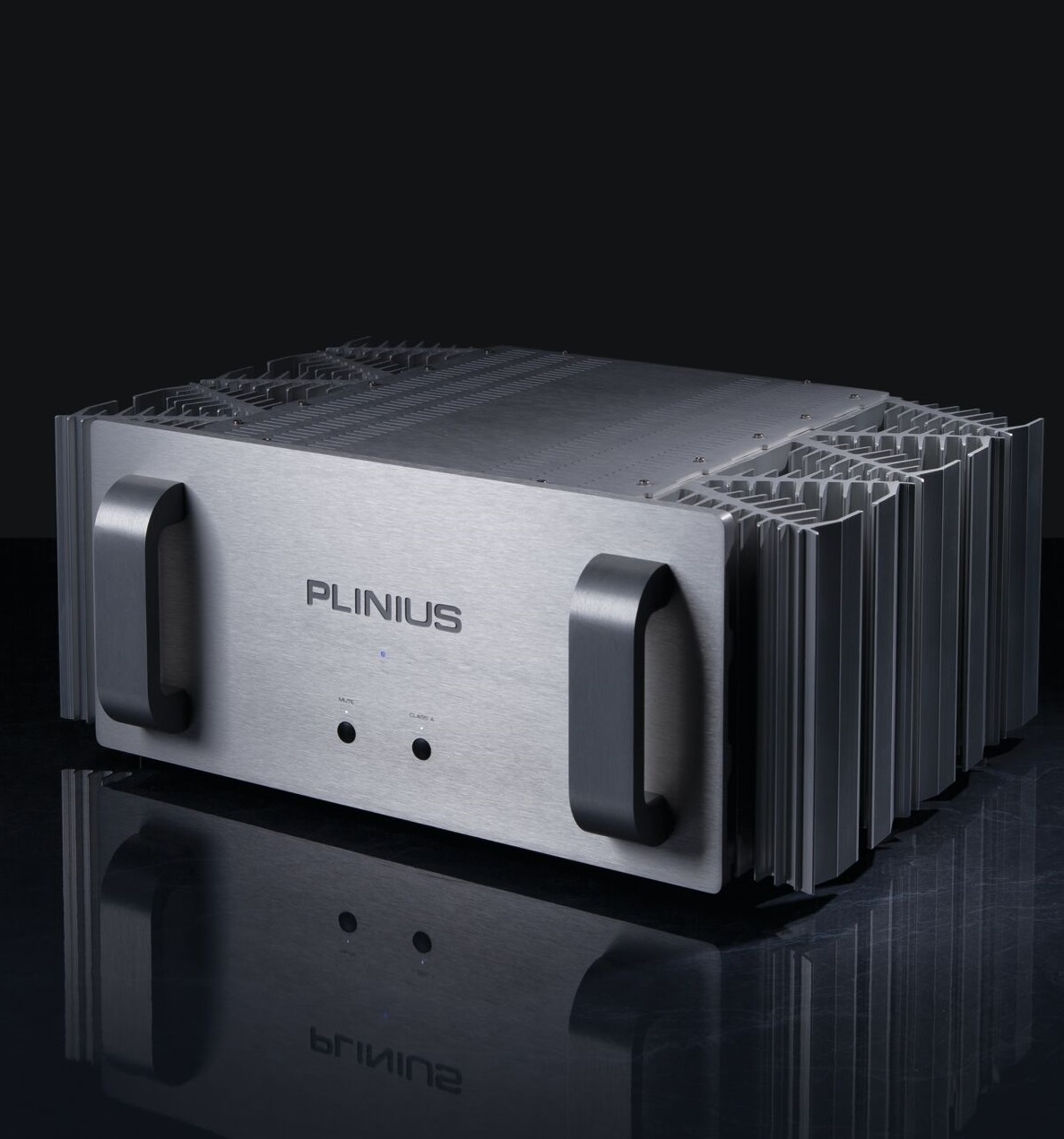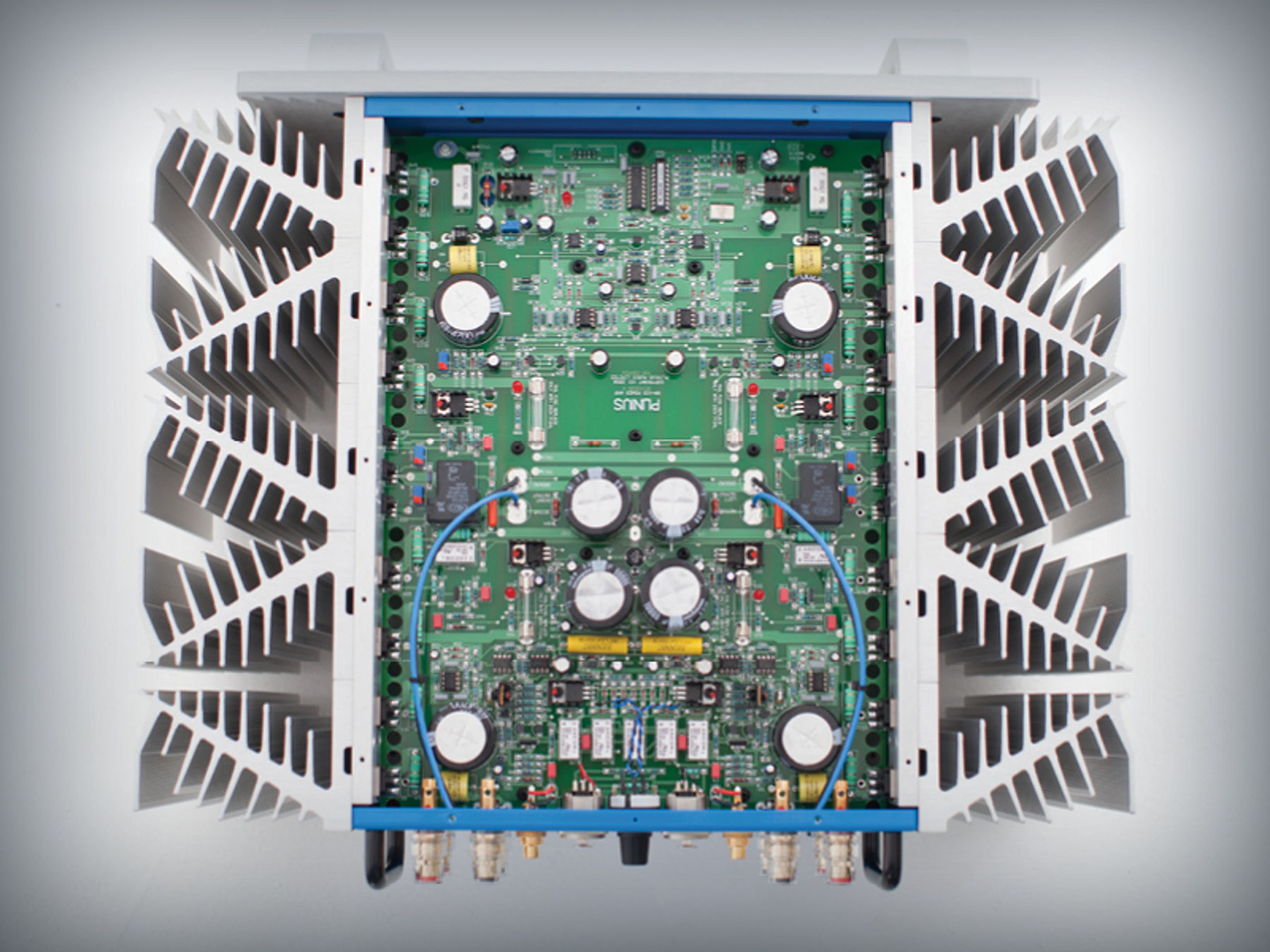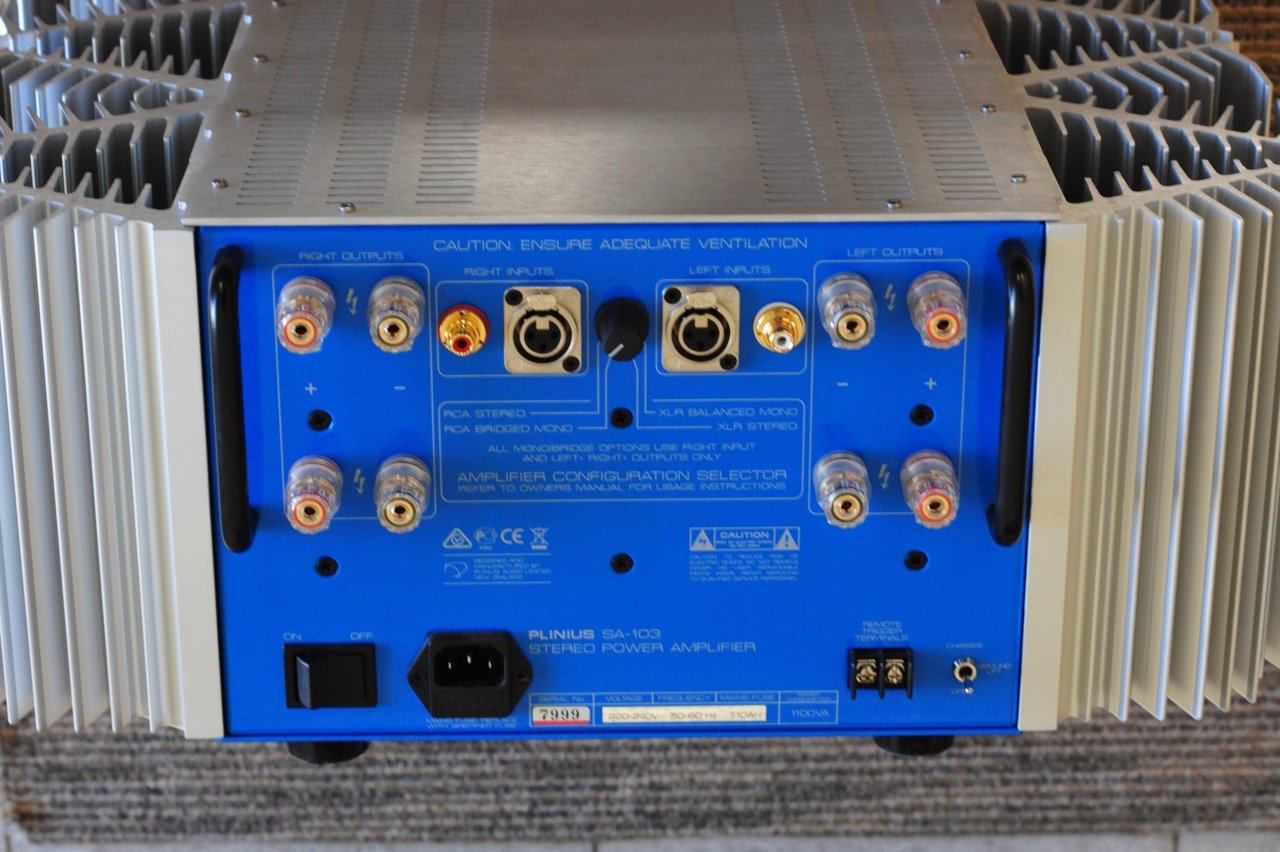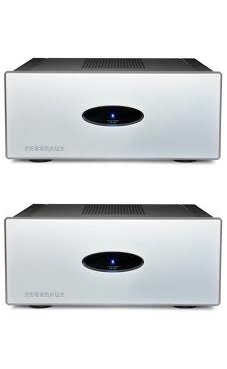Plinius SA-103 Stereo Power Amplifier
Original price was: R180,000.00.R110,000.00Current price is: R110,000.00.
This amplifier is STILL under factory warranty.

The Plinius could also give me hell if I wanted it. My wife loves The Knife, but it has taken me a long time to get into the band’s sound. I really like their songs and production, but they consistently use octavizers and pitch shifters on the voice of the already shrill-sounding Karin Dreijer-Andersson, and it gives me the willies—she sounds a bit like the Linda Blair character in The Exorcist and makes Bjîrk sound like Leontyne Price. The Plinius actually helped me better understand and appreciate what The Knife was going for in the chaotic studio treatment they gave the vocals on Deep Cuts (CD, Rabid/Mute 9339-2): I could hear each bending of pitch and shift of octavizer, the latter sometimes adding a parallel fifth to the melody, sometimes dropping the octave. I still don’t know if I like this band, but I play the album because it’s good to let my wife enjoy my stereo—I mean, our stereo.
Through the SA-103, the top octaves were open, sweet, and extended. During my time with the Plinius I bought a mix CD compiled by record producer Peter Kruder, Peter Kruder: Private Collection (CD, G-Stone GSCD036). It’s a grab-bag of some of the weird, wild, wonderful music he’s collected, with tracks by artists such as Tom Waits, Bernard Herrmann, Talk Talk, and my favorite band you’ve never heard of, Stargard. The sound varies a bit from track to track but is generally quite good. The unforced treble extension on Waits’s “Clap Hands” and Rokia Traoré’s “Mariama” was a thing of beauty. This treble, done in such an unhighlighted way, showed the Plinius to have an extremely open and revealing character, as well as a rich midrange and full, articulate bass. My overall impression of the SA-103’s sound was of warm, open, powerful neutrality.
In terms of soundstaging, the Plinius SA-103 proved to be one of the best solid-state amplifiers I’ve heard. Some amps are good at presenting an illusion of soundstage depth by adding to the signal a character that embiggens (pace Jebediah Springfield) the sound of instruments and places them at a greater sonic distance from the listener. Other amps are surgical in their rendering of space, often giving a hyperdetailed, exciting, yet etched quality to the sound. In this regard, the Plinius SA-103 was an amp Goldilocks would have loved: it was juuuuust right.
When called on to present an upfront and vivid soundstage, such as that of Jean Knight’s “Mr. Big Stuff,” from Stax: 50th Anniversary Celebration (CD, Stax STX2-30203-2), the Plinius put very little space between me and the performers, and placed the instruments squarely in my room with startling immediacy. However, the SA-103 also ably transported me to the sunken-cathedral acoustics of the enormous spaces in which Gavin Bryars’ The Sinking of the Titanic was recorded (by Christopher Barnett and the Gavin Bryars Ensemble; CD, Philips 446 061-2). In terms of soundstaging, the Plinius gave what it got.
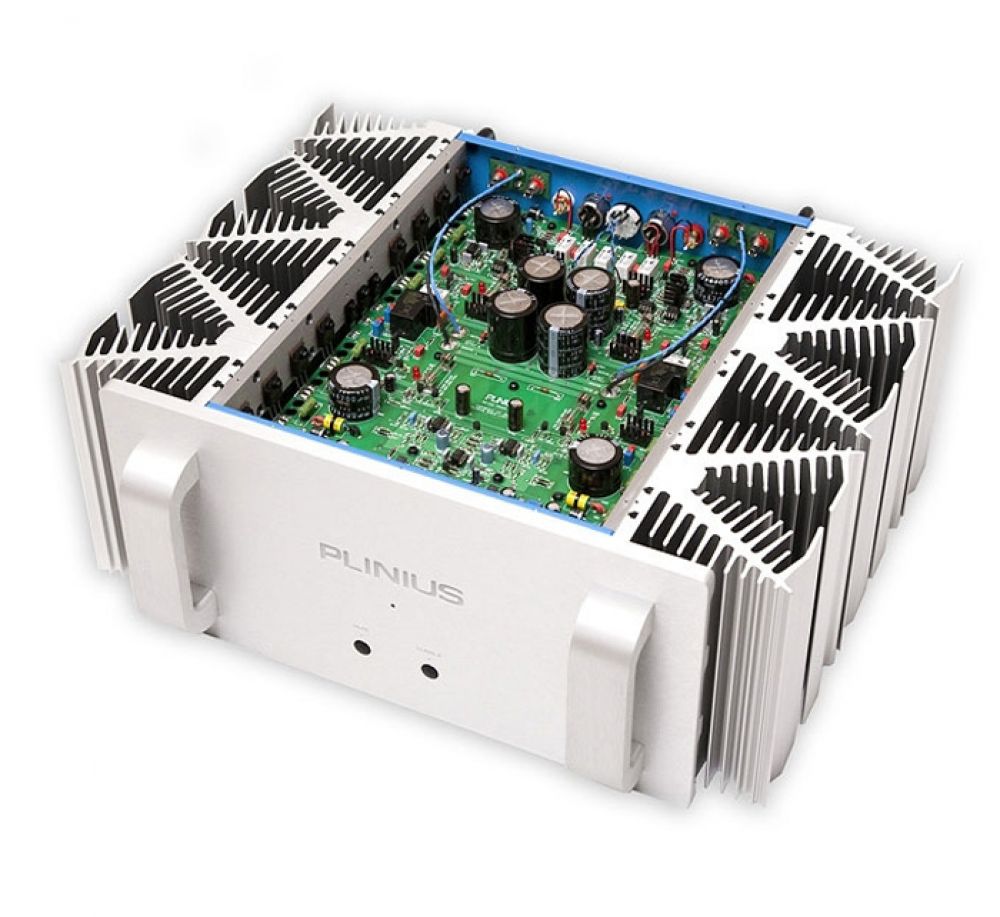
Nothing Compares 2 U
A number of amps have come through my doors in the past year or so. Against the similarly powered Rogue M-180 monoblocks outfitted with KT90 output tubes, the Plinius did very well, sharing with the Rogues what I would normally call “tube magic.” I love what tubes can do in the midrange, and I expected the solid-state Plinius to leave an empty spot in my heart that pined for more of that tube magic. But the Plinius’s midrange was as fleshy as I like it to be. Though the Rogues did a fantastic job of presenting the illusion of a three-dimensional space, they lacked some of the SA-103’s resolution and clarity. In terms of dynamics, while the Rogues are good, the Plinius was great. In this category, tube amps just can’t compete with a class-A amp putting out up to 50 amps of peak current—the Plinius’s balance and voicing really held together at high volumes, inviting me you to do some crankin’.
Though the class-A–biased Pass Labs amps I’ve spent time with, the Aleph 3 and XA30.5, have sweet trebles, I’ve also found them slightly closed-in at the top of the audioband, the XA30.5 having a slight emphasis in the low to mid-treble. The Plinius SA-103 matched this sweetness, but offered a more extended bandwidth at both ends of the audioband than did either Pass model. The Plinius was also a higher-resolution design than the Passes, with blacker backgrounds, less noise, and greater texture and delineation throughout the audioband. The SA-103 was also more dynamic and more timbrally neutral than the similarly priced Pass Labs INT-150 ($7150).
Why Can’t This Be Love?
So—have I fallen in lust with this amp, or is it love? Certainly, there must be other amps out there that might trump the Plinius’s performance in certain areas. The single-ended tube crowd won’t get quite enough of that tube magic to keep them from crossing the SA-103 off their list. And those who crave the hyperdetail of a solid-state Halcro amp might not find what they’re looking for in the Plinius. Those who need absurdly priced audio jewelry will also look elsewhere—the Plinius just isn’t fancy or costly enough.
But if, like me, you’re looking for a power amplifier that can bring you a great deal of the performance that each of these kinds of amplifiers can muster, the Plinius SA-103 may be for you. The best way I can recommend the SA103 is this: If you’re considering spending a bit less than the Plinius’s price, try instead to splurge on the SA-103. If you’re thinking of spending a great deal more, at least give the Plinius a listen before laying down your dough.
The Plinius SA-103 offers a natural, neutral tonal balance, just the right amount of musicality, superb bass performance, plenty of current to drive the most piggish speakers, functional and tasteful design. It is (dare I say it) a good value at its price, considering its performance.
Perhaps, when the next hot amp comes through the door, the SA-103’s spell will have worn off. In a few months, maybe the Plinius and I will have to have “the talk.” I’ll phone it up and tell it, “I’m just not that into you,” and “I’ve met someone else.” Perhaps I’ll even say, “Baby, it’s not you, it’s me.” After all, I am a promiscuous audio reviewer. I love ’em and leave ’em and never look back. But I highly encourage you to at least take a Plinius SA-103 out on a date. It could be the beginning of a beautiful relationship.
In class A mode I also couldn’t shake the impression that an imaginary zoom lens had moved the listener a tad closer to the protagonists. That’s because the atmosphere gained in proximity and intimacy. The goose-bump factor became more intense too. Crediting the Anglo-Saxon belief that ‘there’s no such thing as a free lunch’, I also registered a somewhat less controlled bass register. The firm grip so admired in class A/B mode had loosened up. Because staging compacted as well, the combined effect was that large-scale orchestral extravaganzas like Denon’s Onepoint recordings of Mahler’s Symphonies with The Frankfurt Radio Sinfonie Orchester under Eliahu Inbal exhibited diminished raw spectacle and the concert hall’s flooring showed shorter decays beneath the large kettle drums. I’d thus favor class A/B operation for grandiose symphonic works and bass-heavy Rock. Wherever material demands maximal micro resolution and nuanced exposition however, class A becomes the first choice.

Conclusion. Fortunately I did fess up to personal bias favoring class A and valve amps early on. It thus won’t come as a surprise that we end on a highly laudatory note for our two Kiwi kids. Personally unexpected was how this endorsement would migrate without reservations to operating the SA-103 power amp in class A/B mode. Compared to the many competing options on the market, the nuanced well-resolved approach of these Plinius electronics should appeal to listeners who not only wish to follow an annotated musical score but simultaneously lust after an unusually realistic sonic aesthetic. Put bluntly, these electronics now join my prior top picks of Tenor Audio 75-Wi mono amps and Hegel’s P30/HE30 pre/power combo as most welcome direct alternatives.
Psych profile for the Plinius M8 and SA-103…
• Both are very robustly built and well finished in expert machine shop rather than filigreed jeweler’s fashion.
• Timing, dynamics and soundstaging will convince even critical listeners.
• Precise believably embodied imaging operates on a high level though more remains possible. Unusually broad stage dimensions are augmented by less generous depth and height information which nonetheless remain perfectly adequate for this class.
• Both machine but particularly the SA-103 run in class A bias reside a hand’s width on the warm side of the fence though this has as little in common with euphony as sushi has with pickled herring. The midband is very compelling and the treble integrates harmoniously.
• This slightly warm voicing impressed me because it didn’t compromise resolving power. In fact both machines divulged oodles of detail. They simply didn’t apply any spot light on it which tends to fatigue prematurely. This isn’t something Plinius owners will ever suffer.
• Many amps descend low without any issue but then fall short of painting in full colour. Descriptions of ‘black bass’ often disguise a mostly monochromatic low register. Here the M8 and SA-103 demonstrated how even well below 100Hz there are many tone colors, shadings and gradations to discover.
• Where the SA-103 power amp makes for an already excellent choice in its price class, the switch to class A bias ups its game particularly in the midrange and treble which gain in glow and fluidity to approach even very good valve amps. This is paid for with a small loss in bass control and somewhat less generous soundstaging but both remain perfectly acceptable.
